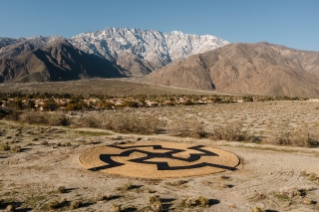-
Sections
-
Keywords
11 Italian motels, from petrol fill-ups to forbidden adventures
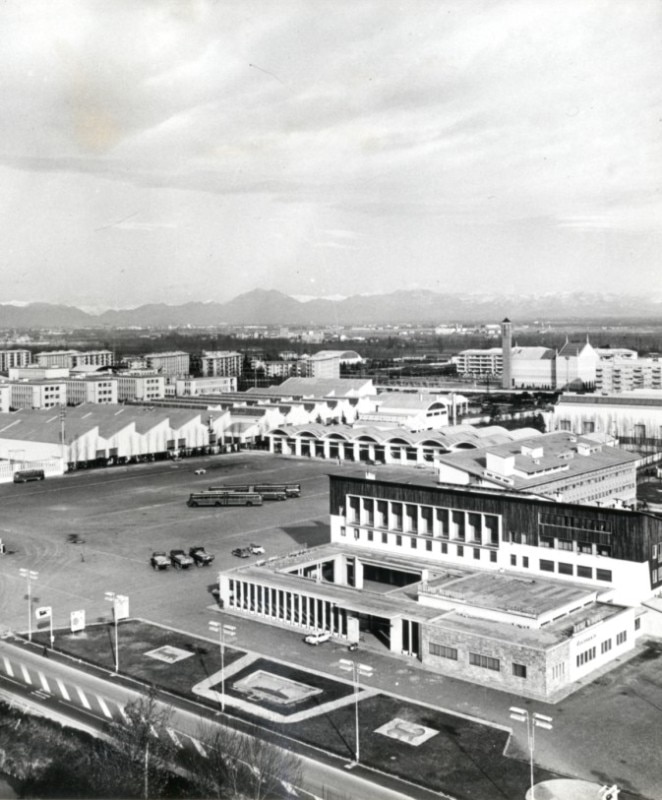
Mario Bacciocchi, Agip Motel for truckers in Metanopoli, San Donato Milanese, Milan 1954
Described as the "prince's architect" due to the friendship with Enrico Mattei, Bacciocchi was the one in charge of designing Metanopoli, ENI's headquarters on the outskirts of Milan, which housed not only the administrative management, research laboratories, production and storage facilities, but also a "village" with housing for workers and a plurality of services. These included the first Italian Motel for truck drivers, which combined the simple and essential character of the architectural language with a welcoming familiarity.
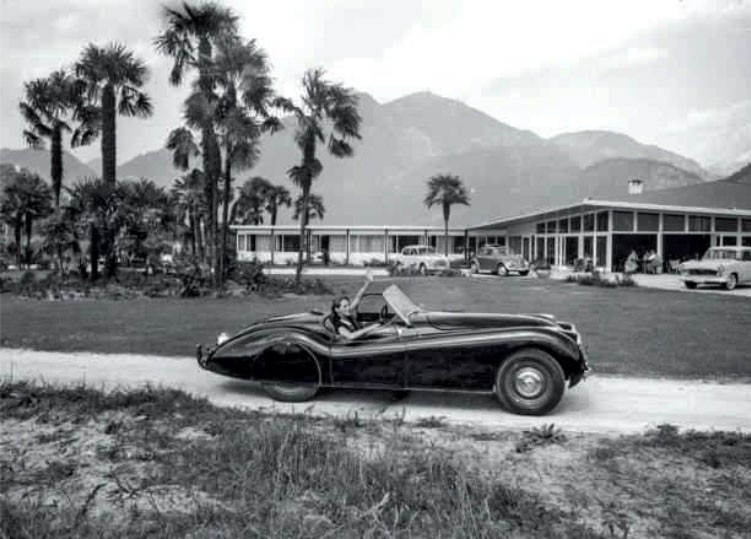
Herbert Osterwald, Motel Losone, Ticino 1955 (now Albergo Losone)
The Motel represented an absolute novelty in Ticino, in terms of both function and technology. The complex, with its minimalist character, developed on one floor and consisting of three volumes connected to a central block, was located in open countryside and was characterised by a construction system with prefabricated elements and aluminium cladding. After being flooded to almost complete destruction by the river Maggia in 1978, the building was restored and over the years expanded to become the current five-star Albergo Losone, still run by the family of the original owners.
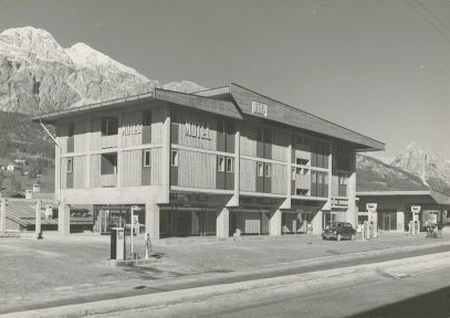
Edoardo Gellner, Motel Agip Cortina d'Ampezzo, 1956 (now Hotel Dolomiti)
This suburban motel with garage, built for the 1956 winter Olympics, was located in a crucial position right at the entrance to the town centre, thus becoming a symbolic landmark access to the sports event itself. Distributed on two levels and originally characterised by a raw concrete structure combined to wooden walls, over the years the Motel Agip, which became Hotel Dolomiti, has undergone numerous alterations that have transfigured the original project without, however, guaranteeing the financial sustainability of the business, which finally stopped in 1990. The 2020 renovation project by Gris Dainese architects aims to return a piece of local history to the city, bringing back the original welcoming configuration, coherently with the figurative language of the Alpine architecture.
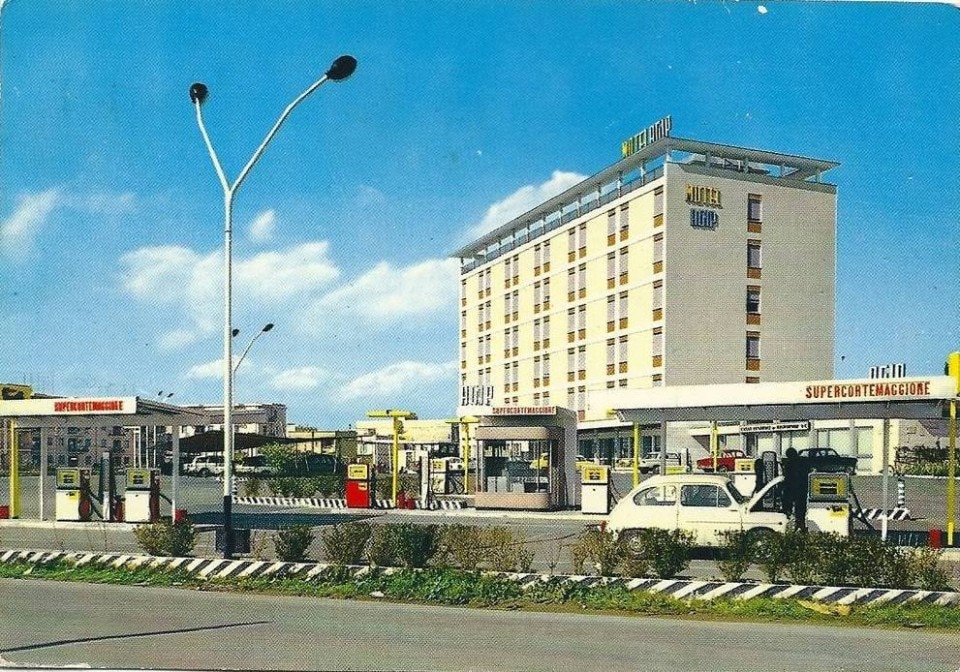
Motel Agip, Gela, Caltanissetta, early 1960s (now Hotel Sileno)
The historic Motel Agip with filling station used to be Enrico Mattei's headquarters when he travelled to Sicily with the aim of exploiting Sicily’s energy resources and was perhaps one of the last places the entrepreneur attended, as he suddenly died in a plane crash on his way back from the island. Today the place is keeping its hospitality function as Hotel Sileno.
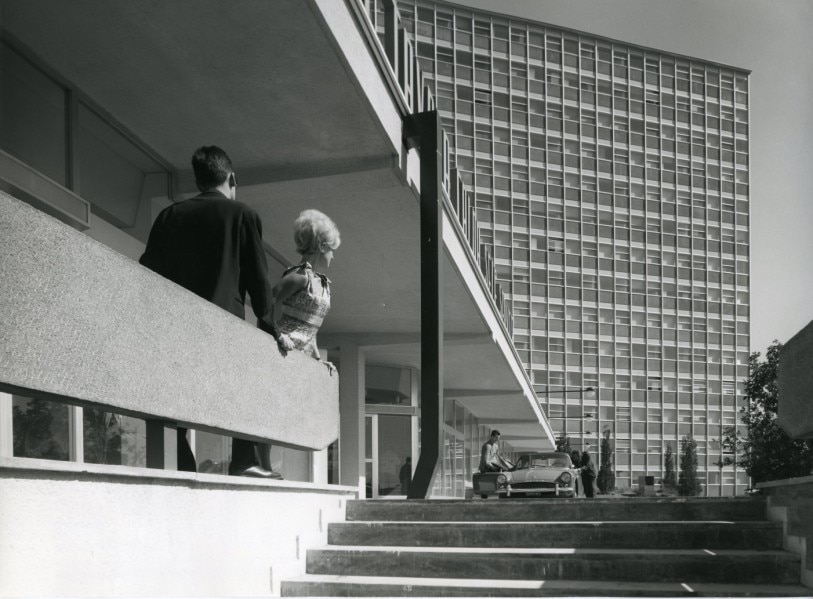
Bacigalupo Ratti, Agip Motel for truckers in Metanopoli, San Donato Milanese, Milan 1961 (now Crowne Plaza)
The building, thirteen storeys high, is characterised by a load-bearing structure in reinforced concrete, with brick-and-concrete slabs, a modular façade in anodised aluminium profiles, precast concrete panels and grit slabs. Renovated in the 1980s, it is now a hotel belonging to the Crowne Plaza chain.
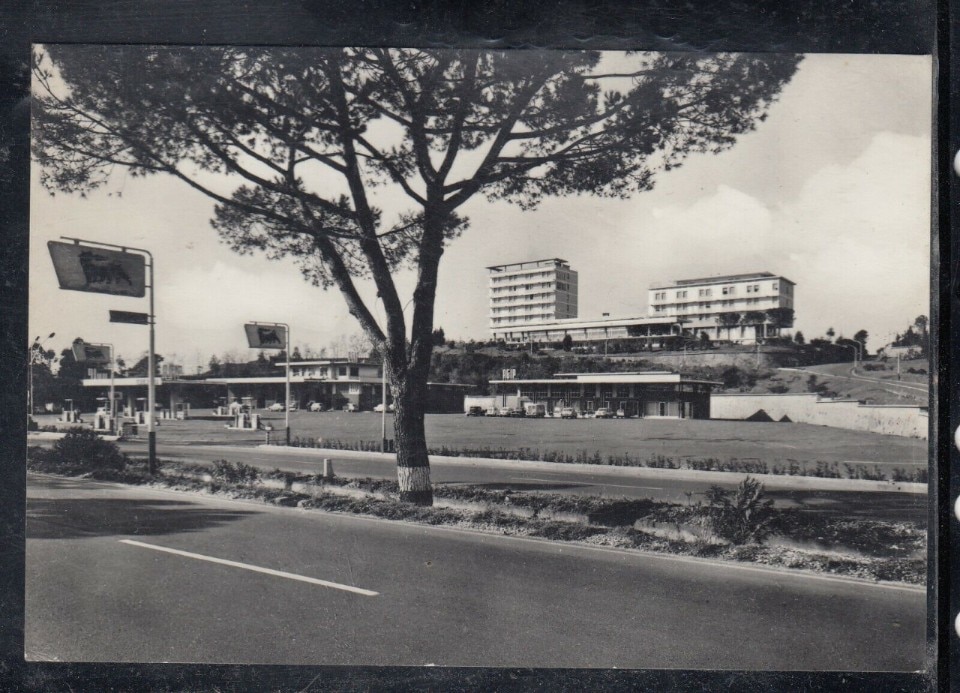
Motel Agip Via Aurelia, Rome 1962 (now Holiday-Inn Rome Aurelia)
The motel along the Via Aurelia served as the setting for Dino Risis film ‘Il Sorpasso’, the road movie that – from deserted Rome in August, to Versilia, to the French Riviera – recounts the tragicomic outcomes of a day’s holiday. Today it continues to maintain its accommodation function, as a hotel belonging to the Holiday Inn chain.
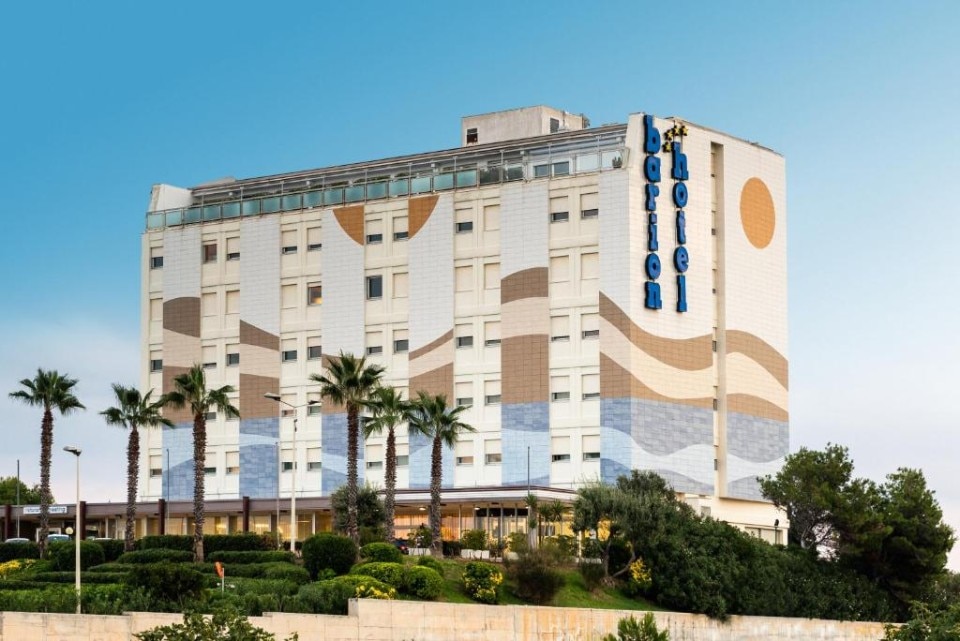
Motel Agip, Bari (now Hotel Barion e congressi)
Situated on the busy national road SS16, the former Motel Agip is now a four-star hotel whose simple and essential façades retain the design of sea waves and sand dunes, evocating the pleasant experience of staying in the city enjoying the Apulian sun.
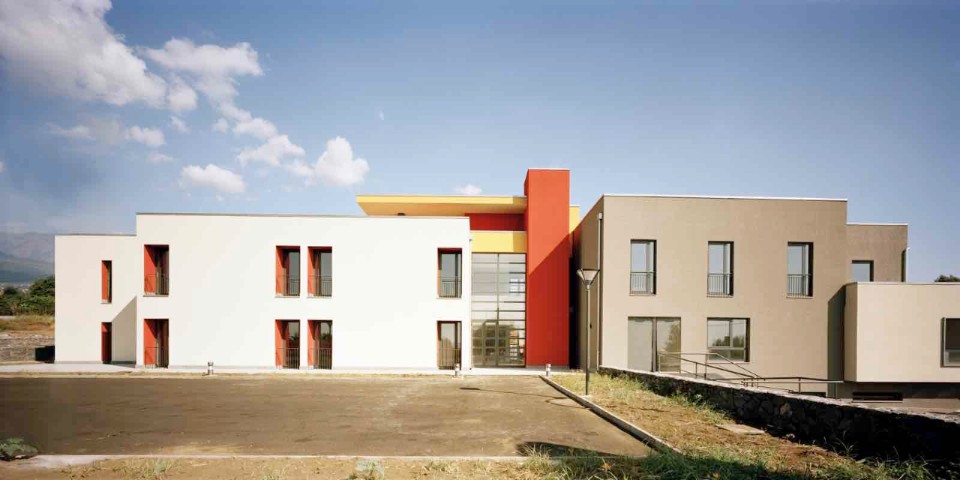
Scau studio, Motel la Zagara, Santa Venerina, Catania 2002
The project started from the expansion and redevelopment of an existing motel. The ground floor houses the reception, offices, some rof the rooms and a bar; the remaining rooms are located on the first floor. The basement is occupied by the restaurant with adjoining kitchen, staff rooms and a conference room. The intervention is based on the contrast between volumes, and color blocks: the white of a first volume confronts the grey of another, separated by the red of the vertical connections and the yellow of the canopies.
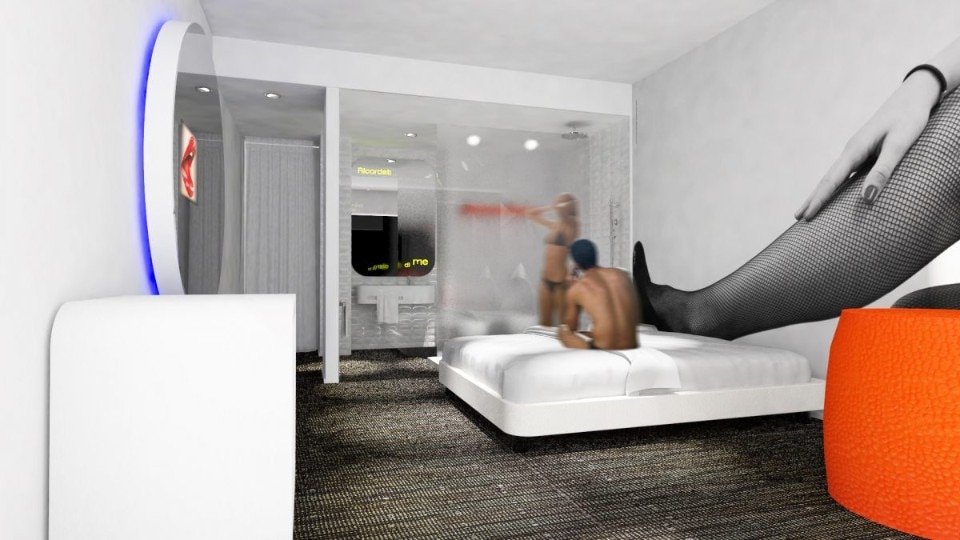
Simone Micheli architectural hero, Green Motel, Vergiate, Varese 2004
The interior design project for the Green Motel by Simone Micheli is completely centered around the sensual and provocative character of the Motel room as an a place for encounters. The variable intensity of the LED lights, the play of transparencies and the soft furnishings aim to give the rooms a voluptuous atmosphere, in a place that can be accessed from a private car-park and directly connected to the outside the structure, so as to protect the confidentiality of the guests.
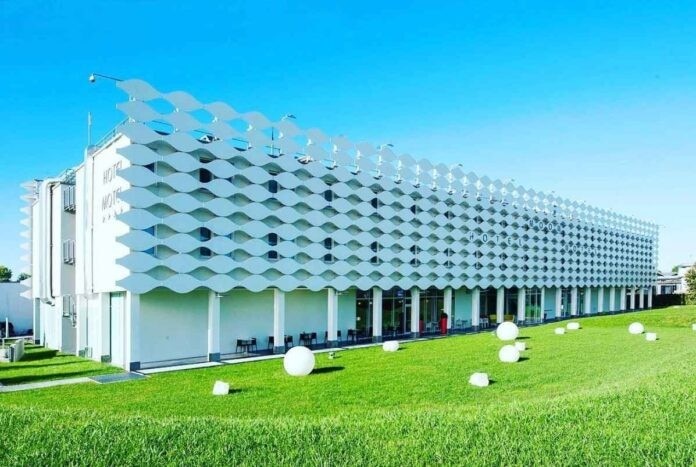
Beppe Riboli design, Studio Poli Architettura, Mo.oM, Milan 2010
The eco-motel with a palindrome name, located close to the motorway, is reminiscent of the layout of a Venetian Villa, articulated in a central three-storey building with reception, offices, restaurant, services and 62 rooms, accessible from a scenic boulevard, and the two one-storey side buildings, the "barchesse", housing the rooms that can be accessed directly from the car park. A permeable, lace-like façade made of prefabricated elements gives the building a clear visual identity.
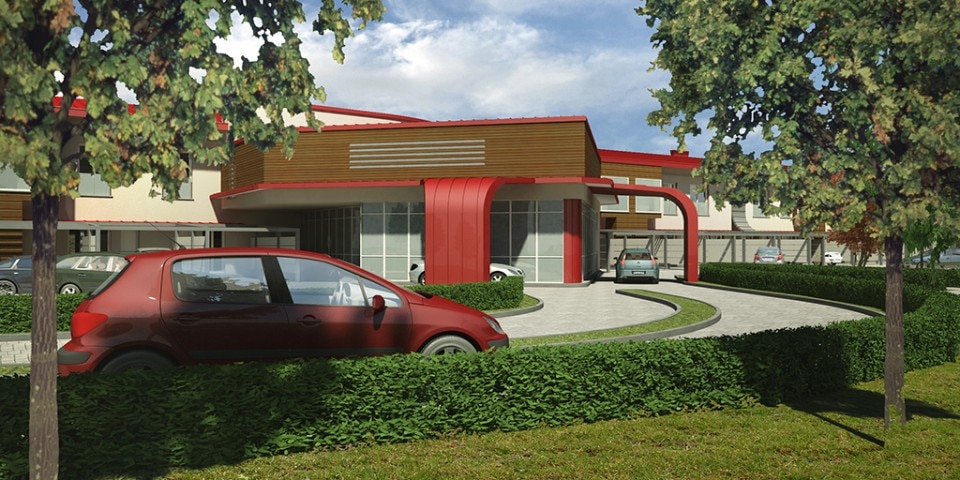
Studio Pilli Architettura, Gran Emotional Motel, Fontaneto d’Agogna, Novara 2017
The complex is developed on two levels; the driveway on the ground floor allows access directly from private parking for both floors of the rooms, favouring the privacy of guests. The interplay of different materials and bright colours reveals a central role for details in configuring a cosy and playful system of spaces.


